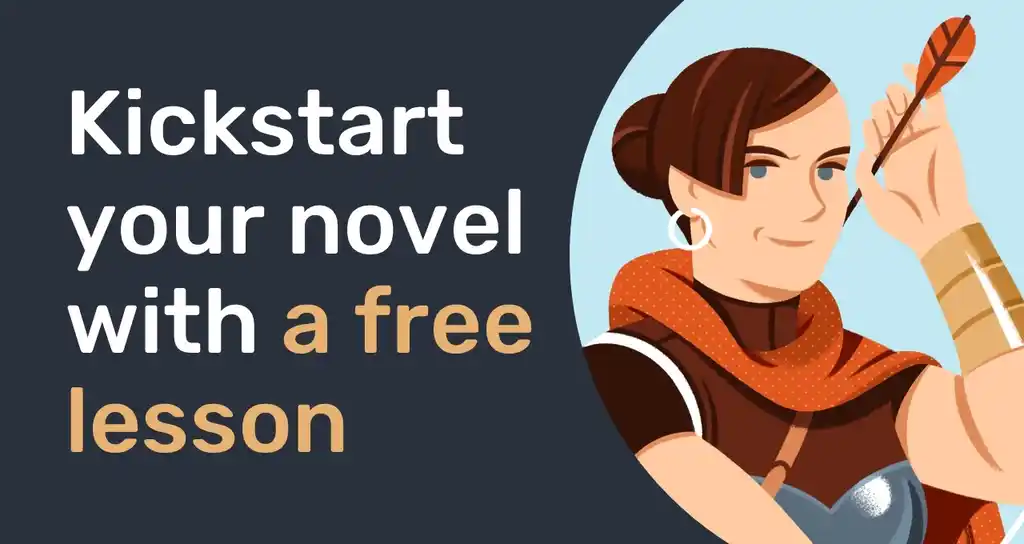Guides • Perfecting your Craft
Last updated on Oct 19, 2022
How to Brainstorm for NaNoWriMo: Shaelin's Top Tips
As a writer, there will be so many times when you might need to brainstorm. But specifically with NaNoWriMo approaching, there might be a few final things that you still have to work out in your book — things that might require some heavy-duty brainstorming sessions.
In this section of our guide, writer Shaelin Bishop offers up her tips for brainstorming ideas for NaNoWriMo.
How to come up with ideas for NaNoWriMo: writer Shaelin Bishop reveals her top tips!
Click to tweet!
1. Treat brainstorming just like a writing session
Just as you might block off time to write, cordon off your schedule to brainstorm and treat it as you would a drafting session. It's easy to rely on ideas that come in your head naturally as you go about your day. That is how a lot of brainstorming happens, but it usually won't fulfill all your brainstorming need. Sometimes you'll hit a snag with your story and find that it's just not working naturally. You're going to have to sit through and work through it, so block off some time (even a few hours) to solve this problem.
Just as you might have a daily word goal to reach when you sit down to draft your book, set goals for your brainstorming sessions. What problem do you want to solve when you're sitting down to brainstorm?

FREE RESOURCE
Reedsy’s NaNoWriMo Toolkit
Crush your word count goal with planning templates, tracking tools, and more.
2. Review and organize what you already have
A lot of the time, I find that just reading through all my notes will start to jog my mind and help me think of solutions without actively doing any brainstorming. So much fleshing-out of ideas happens for when I'm just reading through my notes. I realize something else I need to add — and then I see that there's something else I need to add. Suddenly, I've added so much more just by reading through my notes.

Even if it isn't as straightforward as this for you, it's going to be much easier to work on your book if you have everything well organized. So why not try it?
3. Craft questions to work from
It's very hard to answer a question or solve a problem if you don't know the question or problem. You might have a feeling about the problem you need to solve, but until you put it into the form of a question you won't be able to answer it.
For example, you might know that parts of your character's backstory are missing. That in itself isn't always enough to guide your mind. You want to trick your brain into doing work by giving it the proper framework. Take that problem you have, that missing piece, the character's backstory, and put it into an answerable question.
For example: what are the key events in my protagonist's life that informed his relationship with his brother?
Now that we've made this specific, we've given our brain a concrete question to answer instead of letting it float up in our minds. We didn't ask "what is the character's backstory?" — we specified it as being the backstory of his relationship with the brother because that's what I wanted to focus on right now.
You can also guide your brainstorming through a similar method. Instead of questions, you could start with a list of 'what-if' scenarios. This is a helpful tactic if you're just starting out with an idea and you just have the beginning of a concept. Take that concept and write as many what-ifs from it as possible.

FREE RESOURCE
Reedsy’s Character Profile Template
A story is only as strong as its characters. Fill this out to develop yours.
4. Download your brain
The idea is to take everything floating around in your brain (that you haven't already written down ) and put it on the page. Write down every possibility you can think of.
Set a timer for 20 minutes and start writing. Don't wait for the best option to strike you: go for quantity over quality. Our brains can get kind of stuck when we're waiting for the perfect option, so force yourself to come up with as many answers as you can in the timeframe. Oftentimes, this is what your brain needs in order to come up with the right solution. When the timer goes off, go back and evaluate the ideas.

Some of your ideas might be straight up awful and have absolutely no place in your book, but evaluate the ones that have merit and decide if any of them could work. When you have the right answer, you'll probably know right away. But it almost always isn't the first thing you write down. Your brain kind of has to get the obvious solutions out of the way before it can get to the really creative ones.
In preparing to write a book, a lot of people find it helpful to do this kind of brainstorming by hand — especially as you're likely to spend the rest of your process typing. You can organize it however you want. You could do a list or you could make a flowchart and just start drawing out any ideas that connect to your book. Do whatever works best for you. I don't handwrite very often when I'm drafting, but I do find it's pretty helpful for brainstorming.
5. Consume similar media
This is kind of tired advice that gets shared a lot, but I'm adding it to this list anyway because I genuinely think it works. Look at other media that's similar to your project or even go back to the things that influenced it. If there's a book or a movie or a show that really influenced the content of your story, go back and read that or watch it again. I often return to familiar music to help me.
Definitely make sure you don't get too caught up in a procrastination loop and binge-watch eight seasons of this TV series because it's inspiring you. That did happen to me one time. If it's a show, put a cap on a couple episodes.
6. Research relevant topics

Some books don't require a lot of research. Some books need a ton. But almost all books require some amount of research. Oftentimes, the content you need to flesh out your plot is already out there in resources you've yet to find. Whether it's about your book's location or your protagonist's job, dig into whatever information's out there because it can be really inspiring. It can also make you see anything currently missing from your plot that you must include.
7. Recognize what's missing
You might have a lot of character development but not much plot, or vice versa. However, developing one area of your book eventually helps you develop the rest as these things are interconnected. If developing the plot has been a struggle, but your characters are really working, then doing even more character development can help you think about the plot.
Now, of course, at some point, you'll need to turn your full attention to the thing that's underdeveloped — but to get it working again you can always return to what is already working.
8. Keep note of what works for you
Pay attention to your brainstorming habits — it will give you an insight into how your brain works. Brainstorming is often a matter of tricking your brain into being more productive or creative than it would be on its own, so note what works and where the best ideas come from. Think back to times you've had a rush of inspiration or creativity. Try to identify what caused that and if there's a running thread across all of your ideas. When you figure out what makes your brain tick really well, get back to that and try to replicate it.
In the next part of this guide to NaNoWriMo, we'll offer up some tips on staying productive throughout November.



